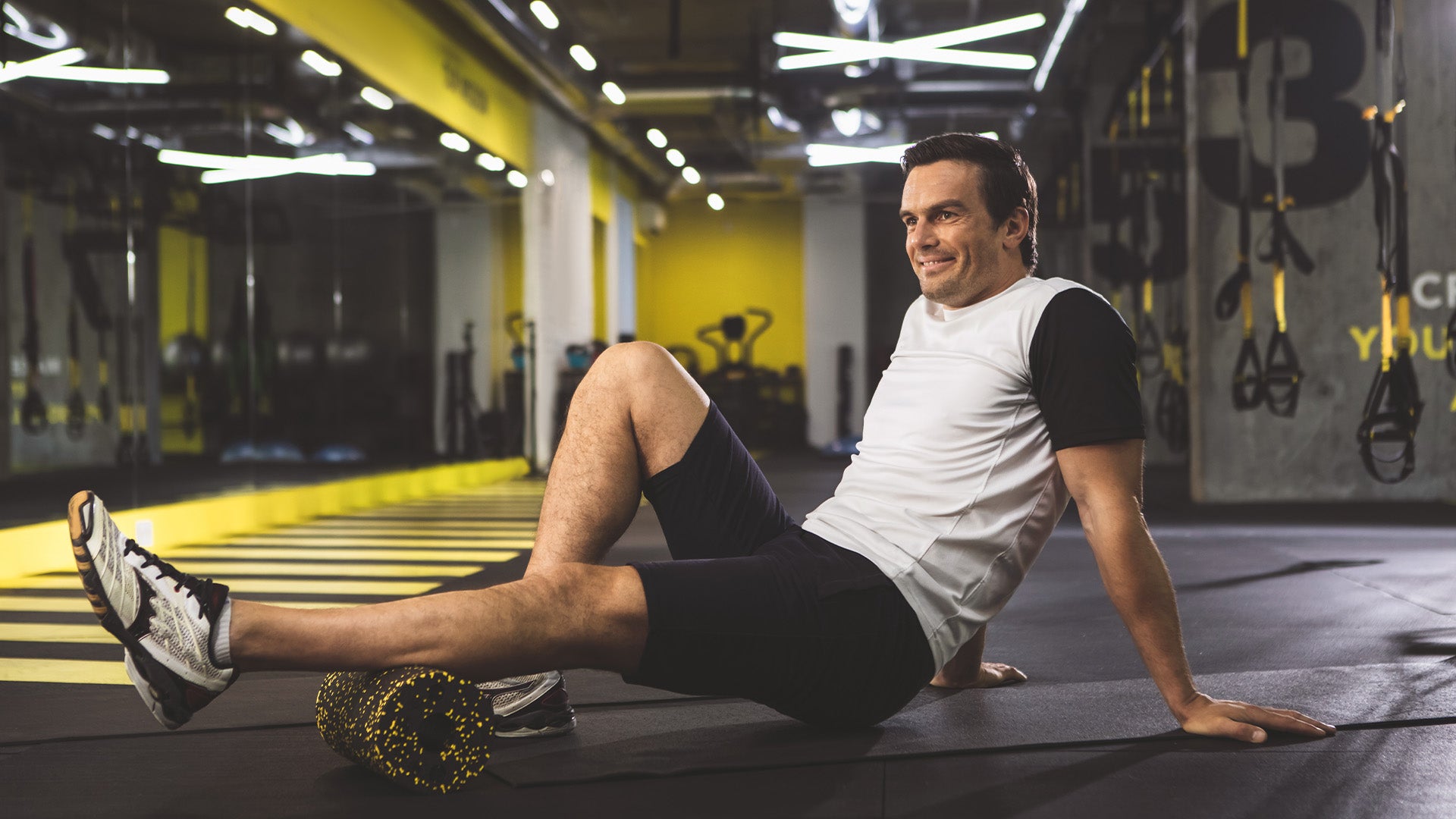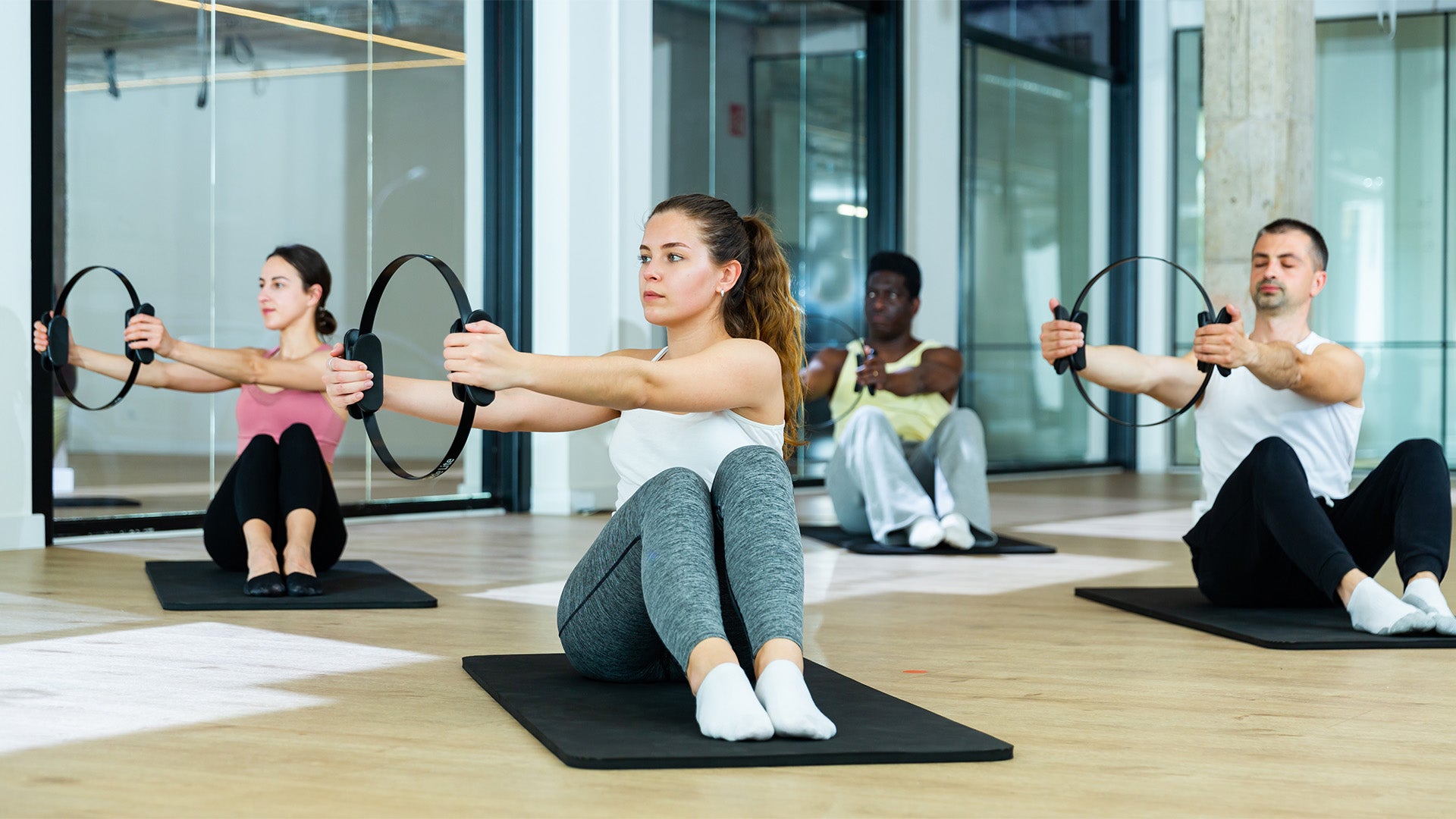Muscle Fatigue Recovery: How To Prevent Injury
The work you put in the gym is essential for helping you look your best. And getting stronger muscles can also give you a better chance of preventing injuries in the future. But overtraining or overworking those muscles can also spell disaster if you’re not recovering properly.
Your muscles will naturally get tired during your workout, and if you’re not giving them adequate time to recover, both in and out of the gym, it might increase your risk of injury. Here’s everything you need to know about muscle fatigue recovery.
What Is Muscle Fatigue?
When you’re working out, your body needs energy to perform at its best. It gets this energy from a molecule called adenosine triphosphate, better known as ATP. During exercise, ATP stores are used to transfer energy to working muscles and cells to keep them going for longer.
But your body can’t keep making ATP forever, so when your ATP demands are higher than the ATP your muscles can supply, you’ll become fatigued. It becomes more difficult to lift weights or keep moving through cardiovascular exercise.
The only way to get more ATP is to wait until your muscles no longer need it, allowing you to hit the “reset” button and start from the top. You get this through rest periods during your workout.
Why Is a Rest Period Important?
It might sound counterintuitive, but most of the time you spend in the gym should be spent doing nothing at all. This is to allow your muscles the time they need to regain all the energy they need to perform at their best.
After heavy lifting sets, you should be resting anywhere from 2-5 minutes before hopping back into your next one. That might seem like a long time, but if you’re trying to gain muscle, this is extremely important. If you do not let your muscles properly rest, there is no physical way for you to continue to lift heavier weights over time. This can cause your progress to plateau quickly.
But even more, not taking adequate rest can put you at risk of hurting yourself. For one, when your muscles run out of ATP and need to switch to their auxiliary power, you’re likely to start compromising your form. Poor form during an exercise can pull a muscle or extend a joint incorrectly, leading to some possible pain.
It can also lead to excess muscle soreness the next day. While there is nothing inherently wrong with being sore after a workout, it can impede your progress when it happens too often. If you’re sore, you won’t be able to get back into your workout routine as quickly as you want, and it can stunt your muscle growth over time.
How Can You Aid Muscle Recovery Outside of the Gym?

Rest periods in the gym are important, but it’s also important to take entire rest days to let your muscles fully recover. Typically, a 24-hour period is long enough to restore carbohydrates and ATP to the working muscles.
With that said, you don’t need to skip the gym entirely. Depending on how you split your workouts, you can work out two days in a row as long as you’re working different muscle groups. For instance, you might do lower body on one day and then upper body the next day. This gives your legs time to recover while you get your chest, back, and shoulders pumped up.
Additionally, it’s important to ensure that your rest days are still active. Take this time to go for a long walk or hike, swim a few laps in the pool, or do a gentle recovery bike ride around the city. Completing small amounts of activity is beneficial for your muscles because it prevents stiffness, reducing injury risk the next time you hop into the gym.
You can try to speed up muscle recovery on your rest days in a few ways:
- Drink tons of water. Hydration is key to preventing soreness.
- Sleep well to help your muscles repair themselves.
- Eat nutritious foods, specifically anti-inflammatory foods.
- Get a massage. This breaks up lactic acid build-up, which is the main reason you feel sore after a workout.
- Stretch, especially after your workout. This also helps break up lactic acid to prevent stiffness and soreness the next day.
If you feel like your muscles are staying sore and tense for upwards of four to five days after a training session, you’re probably pushing yourself a little bit too hard. Dial it back a bit, start slow, and you’ll soon feel less drained after your training sessions.
Of course with Speede, you can also use our proprietary Recovery Mode to help maintain flexibility and promote muscle healing. This mode, which uses the science of End Range Activation (ERA), is included on every Speede machine.
How Can You Use Your Workout as a Recovery?
We mentioned earlier how important it is to keep your muscles moving, even on a rest day. But you might be able to use your workout as a means of helping your muscles recover from some of the more high-intensity training days.
Speede uses AI technology to adapt to your body’s individual strength curve. Your muscles exert different amounts of force at different ranges of motion, so the machine adjusts resistance accordingly to ensure that you’re getting the most effective workout in the shortest amount of time.
However, it can also be used for rehab and recovery. At any particular point in your movement, your muscles will fatigue at different angles during the range of motion. This creates less force than resistance, virtually eliminating the risk of injury. This allows you to move your muscles and help them slowly heal without overworking them before your next session.
You can use the machine to create strength with less energy output. Since muscle healing requires a lot of energy, this is a great way to keep getting a workout in without the risk of hurting yourself. It increases blood flow to the affected muscles and stimulates collagen production to help your muscles heal and grow even quicker.
The best way to understand the difference that Speede can make for your workout regimen is to see it for yourself. Book a demo today and learn how Speede helps you get stronger faster.
Should You Work Muscles Until Failure?

It seems like every single athlete in the gym is obsessed with working until muscle failure, which means you continue to lift the weight until you physically can no longer maintain proper form. And while working for failure is not recommended for some, this is typically the quintessential way of becoming stronger.
If you’re looking for muscle hypertrophy or growth, you usually need to work your muscles to a point where they can no longer function properly. The reason for this is that for muscles to get larger, they first need to be broken down and torn apart. This sounds gnarly, but tiny tears in your muscle fibers from lifting heavy are the main reason you gain muscle mass. These tears heal back stronger than before, making you bigger and bulkier.
With that in mind, if you are trying to gain strength, training until failure is key. You’ll probably want to pack on heavy weights and do lower reps, probably somewhere between 8-12 reps, if your main goal is to get sizably larger. But if you want to get stronger, you might not want to work until failure.
When you work until failure, you prevent your muscles from being able to adapt to the heavy weight. If you want to be able to drive more weight for longer in the gym, you’ll want to drop the weight down a bit and do higher rep counts of about 12-15.
In Conclusion
Muscle fatigue is a natural part of any training program, but overtraining during bouts of muscle fatigue can lead to injury. Trying to push through a workout even when your muscles feel weak, sore, or tense can cause more harm than good if it compromises your form.
It’s important to take long rest periods during your training sessions. Two to five minutes are recommended before moving into your next set. And during the week, you should try to take a rest day in between intense training sessions to let your muscles regenerate and relax before you work them again.
But believe it or not, you can recover even while working out. Speede’s Recovery Mode enables you to use the perfect amount of resistance to stretch the muscles and get lactic acid moving before it turns into muscle soreness the next day. It can also be used to help rehabilitate after a muscular injury from overtraining.
Book a demo today and learn how Speede can accelerate your training while keeping you healthy.
Sources:
Adenosine triphosphate | American Chemical Society
Muscle fatigue: general understanding and treatment | PMC
Muscular Hypertrophy: Back to the Basics [Updated July 2022] | NASM



